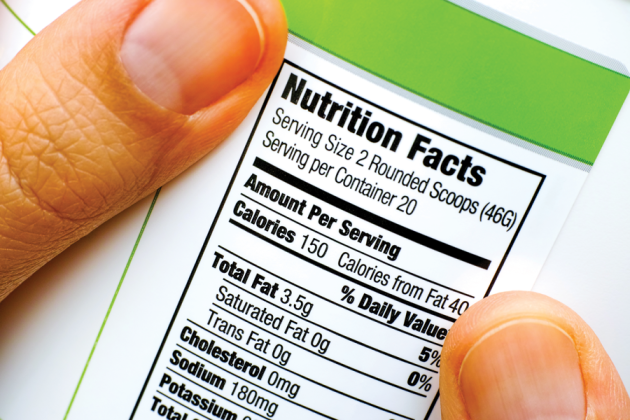
Food Law: Impact of supply chain disruptions on food labelling
By Victoria Asikis
Regulation Editor pick Food lables food law packaging supply chain Photo © rosinka79 / Adobe Stock
Photo © rosinka79 / Adobe Stock Global events can cause long lasting disruptions in the supply of ingredients to food manufacturers. This was especially pertinent in March 2020 when the pandemic began, as manufacturers who may not have experienced shortages in the provision of goods in the past were suddenly faced with the prospect of not having access to certain ingredients.
For food manufacturers, disruptions in the supply chain pose unique challenges, in particular, as it relates to food labelling. A fundamental requirement for food labels is an accurate ingredients statement. Yet, accuracy in an ingredients statement is predicated on the assumption the manufacturers making food products will have access to the ingredients they need, and that are declared on a label in an ingredients statement. If a food does not contain an ingredient that is declared in an ingredients statement, or contains an ingredient in less of a proportion than the order in which it is declared, the product is technically mislabelled under the law.
In November 2021, due to ongoing supply chain disruptions and the concomitant impact on ingredients statement labelling, the Canadian Food Inspection Agency (CFIA) released a notice to industry attempting to clarify the existing provisions in the Food and Drug Regulations (FDR) for permitted flexibilities in a list of ingredients. Through the notice, CFIA allowed for flexibilities in an ingredients statement in situations when a substitution cannot be planned for, resulting in the need to substitute ingredients for “short periods of time” without being required to change an ingredients statement on a product label (provided the risk of doing so is low). The notice also suggested regulated parties were required to have a plan to demonstrate how ingredient shortages would be resolved, or how product labels/formulas would, over time, be brought into compliance.
The issue is that supply chain disruptions have stretched beyond only those posed by the pandemic as recent global events have caused other ingredient shortages, most notably in the availability of canola oil. While CFIA maintains that vis-à-vis the notice to industry they attempted to clarify the existing labelling flexibilities under FDR, what resulted instead appears to be a two-tiered approach to supply chain disruptions and associated permitted labelling flexibilities for an ingredients statement: on the one hand, unplanned supply chain disruptions that result in short-term substitutions of ingredients where a label need not be revised, and on the other hand, planned-for supply chain disruptions that result in long-term substitutions, variations or omissions of ingredients that necessitate label revisions. As a result, it is ambiguous under which circumstances these labelling flexibilities apply, how a long-term versus short-term supply chain issue is quantified, what CFIA considers a “natural or economic” supply chain disruption to be such that an ingredient may need to be substituted, omitted or varied, and how these matters affect food labels, in particular an ingredients statement.
It is also unclear if manufacturers are obligated to inform CFIA when a supply chain issue has resulted in the need to take advantage of existing labelling flexibilities. Communications with the regulator seem to suggest manufacturers must contact their regional CFIA offices to seek clarity on these matters and discuss solutions for how labelling flexibilities will be resolved once supply chain issues are solved. However, this is not necessarily a productive approach to resolving the issue, as it could open the potential for even more ambiguity due a lack of consensus between regional offices.
Manufacturers are now looking for clarity on CFIA’s current position as related to labelling flexibilities for substitutions, omissions and variations in ingredients and the corresponding impact on an ingredients statement, similar to recent policies implemented by the United States Food and Drug Administration. Further, clarity is needed in how the provisions of FDR and CFIA’s own guidance are to be interpreted, particularly considering that it is becoming increasingly unclear when certain supply chain disruptions will be fully resolved.
Victoria Asikis is an associate in the Ottawa offices of Gowling WLG, specializing in food and drug regulatory law. Contact her at victoria.asikis@gowlingwlg.com.
This column was originally published in the June/July 2022 issue of Food in Canada.
Print this page